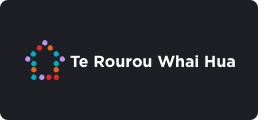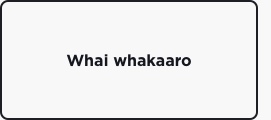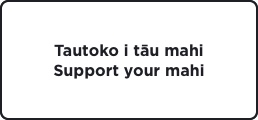6. Strengthen your understanding (Whai whakaaro)

|
Whai whakaaro is the time to reflect together on progress. Whai whakaaro continues to draw on the varied perspectives of ākonga, whānau, kaiako and other team members. It encourages teams to bring together supporting evidence gathered throughout whakamahi. In whai whakaaro teams will reflect together not only on the impact of changed practices on outcomes for ākonga but also the process of working together as a team. |
||
| A learning sector comprises interconnected learning communities that work together as a sector-wide community of learning to support and encourage system-wide improvement for the benefit of every student. - MoE Assessment Position Paper | ||
|
|
Taken from Assessment for Learning |
|
|
In whai whakaaro teams will take time to understand how supports across the tiers have impacted on progress. The learning in whai whakaaro can help teams build on and strengthen practices across the system - the classroom, the school and cluster and the wider education community. Whai whakaaro brings together evidence from ongoing kohikohi that help teams know their impact. |
||
Learning systemThe Ministry of Education position paper on assessment outlines the power of a learning systems.
|
||
|
The following videos are examples of kaiako and leaders using their information gathering and sharing practices to reflect on teaching and learning with each other and with ākonga and whānau. An app one school uses within their SMS to record children's progress and achievement and engage parents and students in learning. Engaging parents in learning through technology Great teaching, evidence-based data, and a tailored approach to sharing data with parents, all making for meaningful impacts on children's learning. |
||
Gathering information for reflectionAs part of whai whakaaro you and your teams will gather information and consider:
Many of the tools and approaches in kohikohi can be revisited to gather evidence of progress, shifts in practice and areas for continued development. Once again it is important to include the varied perspectives of the team so that everyone has a voice in whai whakaaro. The Collaborative Planning for Learning guide on the Inclusive Education website has two sections that can support teams in whai whakaaro: |
||
Story HuiStory Hui is a group storytelling process that channels communication in multiple dimensions at once. Story Hui is being used in schools to help reveal and celebrate often invisible aspects of success. Read more about this approach in the Education Gazette. |
||
Support ākonga self-reviewKaiako may consider a variety of options to support regular self-review with ākonga, and ways they can share with whānau and other supporting adults. These could be:
|
||
| To access reflective questions to 'support your mahi' in whai whakaaro click on the tab below. | ||



